Abstract
Patterns of growth inhibition of Escherichia coli in the presence of 2-bromo-2-nitropropane-1,3-diol (bronopol) indicate a period of biocide-induced bacteriostasis followed by growth at an inhibited rate. The length of the bacteriostatic period, but not the subsequent growth inhibition, was reduced by the addition of excess cysteine. Patterns of growth inhibition were unaffected by catalase or superoxide dismutase. The bactericidal concentrations (100 to 500 micrograms/ml) were considerably in excess of the MIC (13 micrograms/ml) and generally produced first-order reductions in viability. Bactericidal activity was considerably reduced by anoxic conditions and by the presence of catalase or superoxide dismutase. Results indicate that there are two distinct reactions between bronopol and thiols. Under aerobic conditions, bronopol catalytically oxidizes thiol-containing materials such as cysteine, with atmospheric oxygen as the final oxidant. By-products of this reaction are active oxygen species such as superoxide and peroxide, which are directly responsible for the bactericidal activity of the compound and for the reduced growth rate after the bacteriostatic period. The latter effect probably results from the oxidation of intracellular thiols such as glutathione and cysteine. Catalytic oxidation of thiols in the presence of excess thiol leads to the creation of an anoxic state. Under these conditions, the slower reaction with thiols, which consumes bronopol, predominates. Consumption of bronopol by its reaction with thiols, without the involvement of oxygen, leads to the eventual removal of bronopol from treated suspensions and the resumption of growth.
Full text
PDF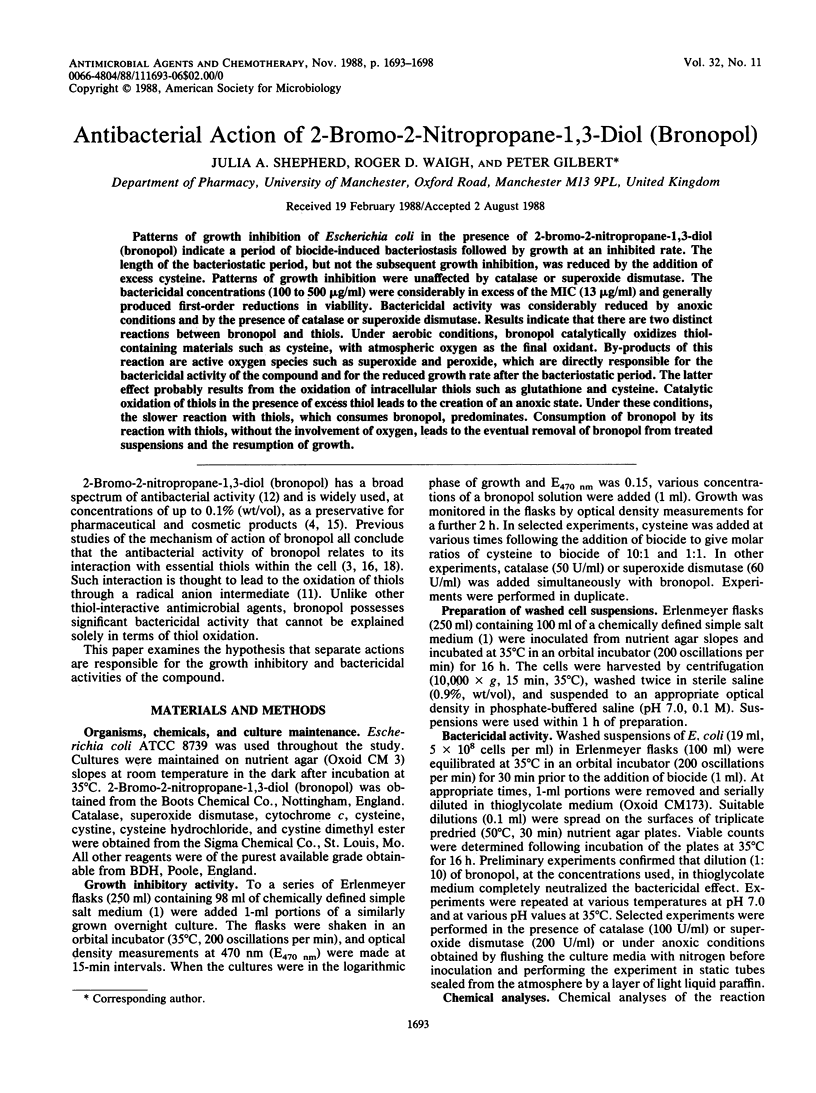
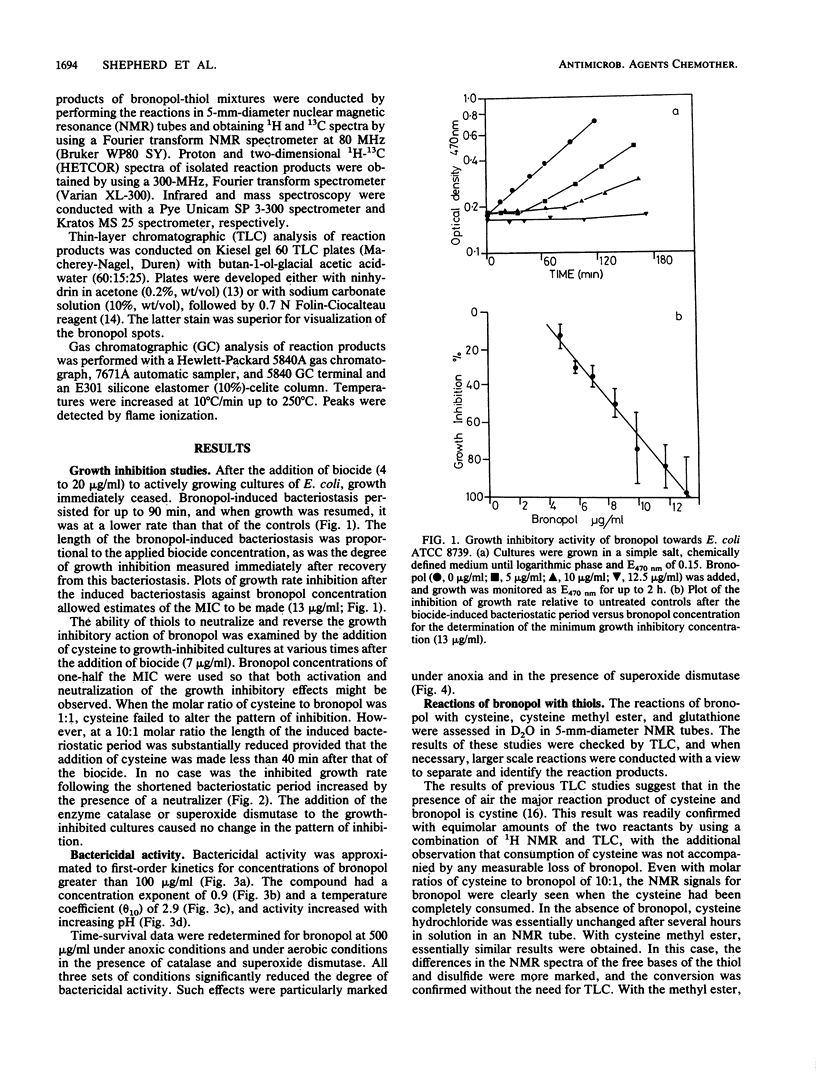
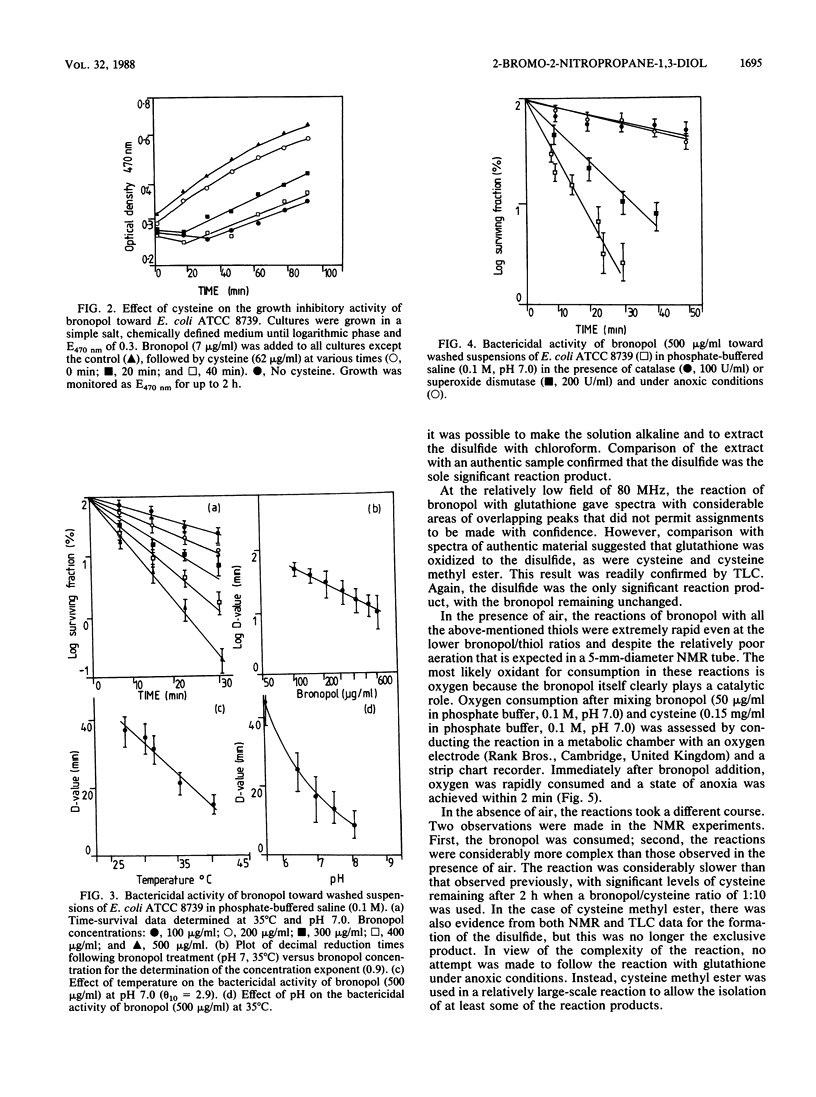
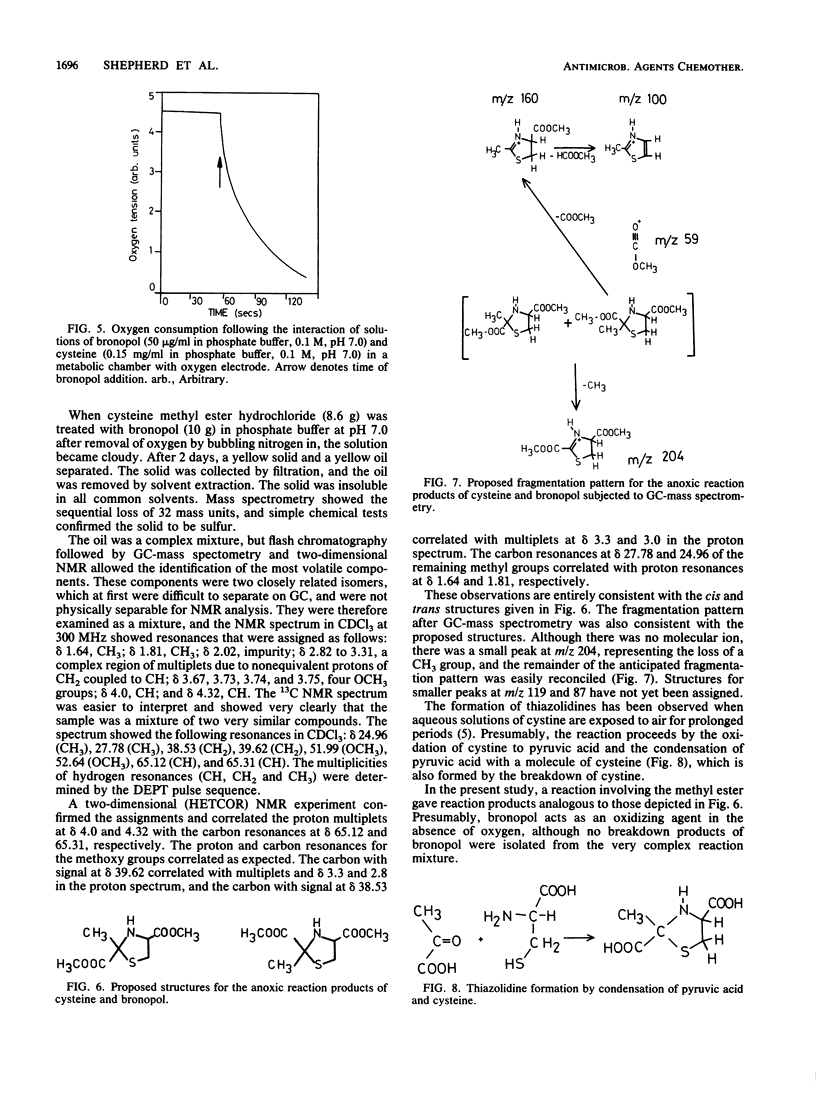
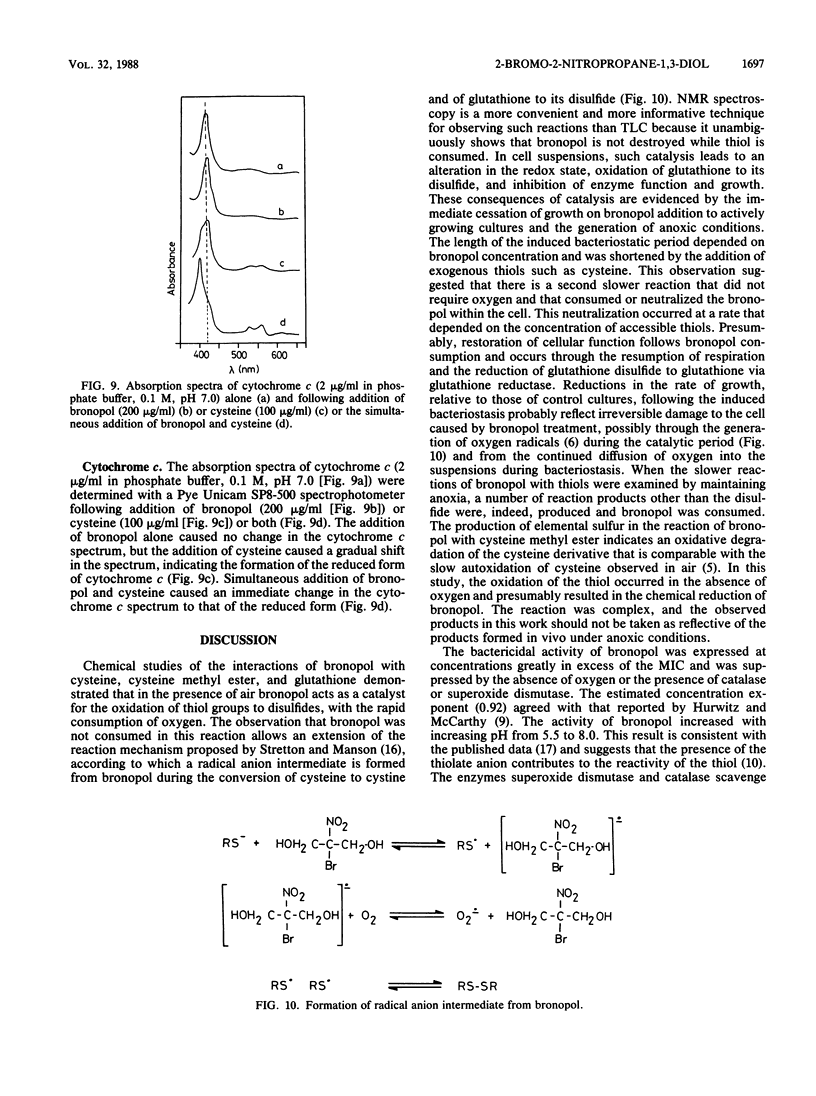
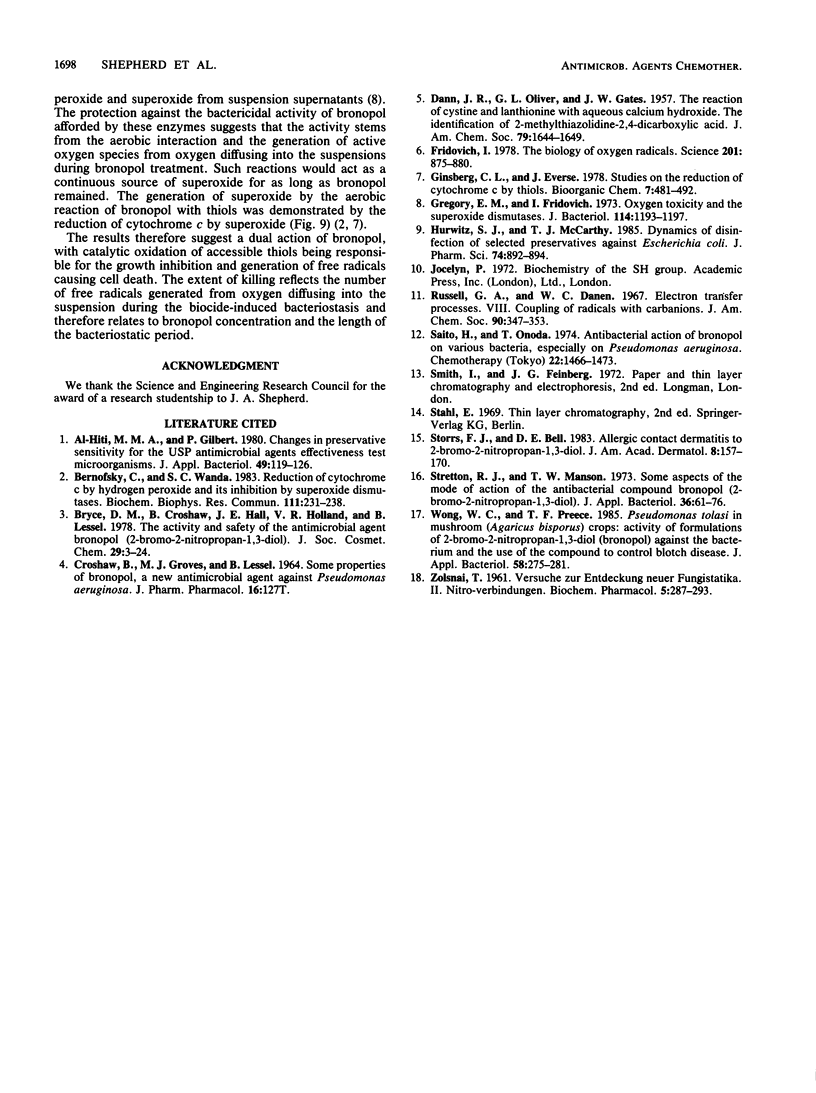
Selected References
These references are in PubMed. This may not be the complete list of references from this article.
- Al-Hiti M. M., Gilbert P. Changes in preservative sensitivity for the USP antimicrobial agents effectiveness test micro-organisms. J Appl Bacteriol. 1980 Aug;49(1):119–126. doi: 10.1111/j.1365-2672.1980.tb01049.x. [DOI] [PubMed] [Google Scholar]
- Bernofsky C., Wanda S. Y. Reduction of cytochrome c by hydrogen peroxide and its inhibition by superoxide dismutase. Biochem Biophys Res Commun. 1983 Feb 28;111(1):231–238. doi: 10.1016/s0006-291x(83)80141-7. [DOI] [PubMed] [Google Scholar]
- Fridovich I. The biology of oxygen radicals. Science. 1978 Sep 8;201(4359):875–880. doi: 10.1126/science.210504. [DOI] [PubMed] [Google Scholar]
- Gregory E. M., Fridovich I. Oxygen toxicity and the superoxide dismutase. J Bacteriol. 1973 Jun;114(3):1193–1197. doi: 10.1128/jb.114.3.1193-1197.1973. [DOI] [PMC free article] [PubMed] [Google Scholar]
- Hurwitz S. J., McCarthy T. J. Dynamics of disinfection of selected preservatives against Escherichia coli. J Pharm Sci. 1985 Aug;74(8):892–894. doi: 10.1002/jps.2600740820. [DOI] [PubMed] [Google Scholar]
- Storrs F. J., Bell D. E. Allergic contact dermatitis to 2-bromo-2-nitropropane-1,3-diol in a hydrophilic ointment. J Am Acad Dermatol. 1983 Feb;8(2):157–170. doi: 10.1016/s0190-9622(83)70018-6. [DOI] [PubMed] [Google Scholar]
- Stretton R. J., Manson T. W. Some aspects of the mode of action of the antibacterial compound bronopol (2-bromo-2-nitropropan-1,3-diol). J Appl Bacteriol. 1973 Mar;36(1):61–76. doi: 10.1111/j.1365-2672.1973.tb04073.x. [DOI] [PubMed] [Google Scholar]
- ZSOLNAI T. [Attempts at the discovery of new fungistatics. II. Nitro compounds]. Biochem Pharmacol. 1961 Feb;5:287–304. doi: 10.1016/0006-2952(61)90020-x. [DOI] [PubMed] [Google Scholar]


